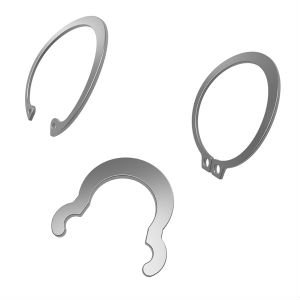 Daemar’s expert tips on retaining ring selection for cost savings
Daemar’s expert tips on retaining ring selection for cost savings
October 7, 2019 REDWIRE is news you can use from leading suppliers. Powered by FRASERS.
Posted by Daemar Inc.
Daemar manages the sourcing and delivery of millions of Essential Components to the manufacturing and MRO marketplace. I... Read more
Subscribe
Free REDWIRE e-newsletter

Daemar carries a variety of retaining rings.
As one of Canada’s premier suppliers of essential components for industry, Daemar Inc. knows that customers can reduce their fastener-assembly costs through retaining ring selection. By replacing expensive traditional fasteners with retaining rings, users save a lot of money. Retaining rings can also handle a lot of non-traditional applications.
A recent blog entry by the company outlines the six main steps of retaining ring selection for substantial cost savings.
Axial versus radial rings
The first step, according to Daemar, is to determine the ring type. An axial ring is required for an assembly to be retained in a housing/bore; if the assembly is on a shaft, then the user needs a radial ring. If the applications requires a retaining ring to act as a spring or preload on parts to reduce chatter or vibration, a bowed or beveled ring is necessary. If there is minimal thrust load in the assembly, a self-locking ring is ideal.
Next come installation considerations. How the ring will be installed also affects the type of ring used. Installation along the axis or centre point of a shaft/housing requires an axial ring, while installation along a circle radius requires a radial ring.
Step three is determining ring size. The diameter of the housing or shaft determines the size required for the application. Retaining rings are manufactured according to Inch, DIN, and ANSI Metric standards. Next, the customer must choose the proper ring material for the application: options include stainless steel, carbon steel, and beryllium copper. The fifth step is selecting the right finish; the possibilities include different types of zinc, phosphate, or trivalent.
The final step of retaining ring selection is a vital yet often overlooked one: selecting the right installation tool for the assembly. Rotor Clip retaining rings, for example, can be installed with many manual and automatic tools – pliers and pneumatic tools suit axial rings, while applicators and dispensers are better for radial rings. Never use fingers, hammers, or other makeshift devices; this increase injury risk and could damage the application.
By following these steps, users save costs significantly.
To learn more, contact Daemar.
Share
Posted by Daemar Inc.
Daemar manages the sourcing and delivery of millions of Essential Components to the manufacturing and MRO marketplace. I... Read more
